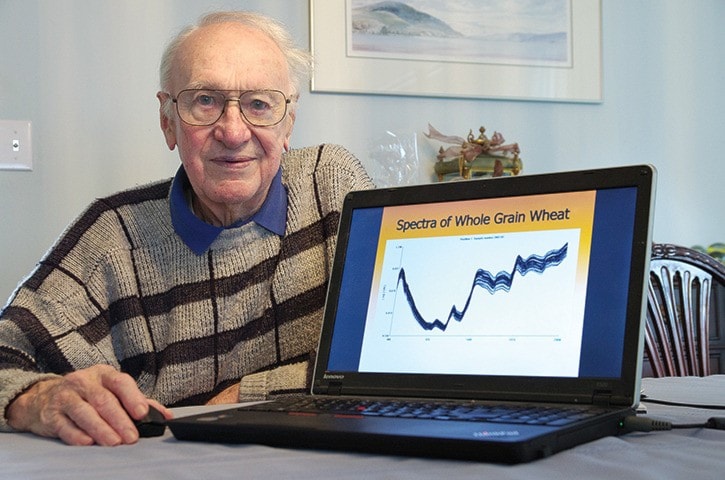A former Canada Wheat Board chemist has a career he can truly reflect upon.
Phil Williams, who operates the Nanaimo-based company, PDK Projects with his wife Diane Malley, is well-known in the scientific world for spearheading a process that revolutionized how wheat grain is graded.
Grain fetches the highest prices based on its protein content. In the 1960s a chemical process called the Kjeldahl test was the gold standard for guaranteeing the protein content of Canadian Hard Red Spring wheat.
There were about 2,500 grain elevators in the country and the majority of wheat was transported by train to terminals in Thunder Bay, Ont., then shipped overseas.
“The system that was set up was that the elevators in the country - there were over two and a half thousand of them in those days - every time they loaded a car they’d send a sample into Winnipeg in a colour-coded envelop and we did a Kjeldahl test on it,” Williams said.
Those test results were then telexed to the grain terminals. The system worked because it took four days for the samples to be mailed to Winnipeg, tested, and the results forwarded to Thunder Bay, but eight days for the grain to arrive.
But with rising production and exports, a faster testing method was needed. Williams had the answer when he perfected the first-large scale industrial application of a process known as Near Infrared Spectroscopy.
“It’s important because analytical work takes time,” Williams said. “For example, protein testing takes about two hours ... Near Infrared Spectroscopy can give you a result in about two minutes. That’s from you giving me the sample and me giving you the result.”
As with all light, near infrared light is reflected and absorbed depending on the composition of the illuminated substance. And that can be measured.
Karl Norris, an American scientist, was first to use computers to interpret those measurements to determine moisture in soil, fat in milk or even protein in grain and near infrared spectroscopy was born.
Williams led experimental programs to develop a system that could sample grain with high speed and accuracy. In 1971 he found Neotech, a company in Maryland, that made paint analyzers for DuPont. They cost $7,200.
By the end of 1975, Williams, with Neotech engineers, had refined the technology into a fully functioning system, which ultimately became the new standard method for grain testing.
More than 400 industrial applications use Near Infrared Spectroscopy.
